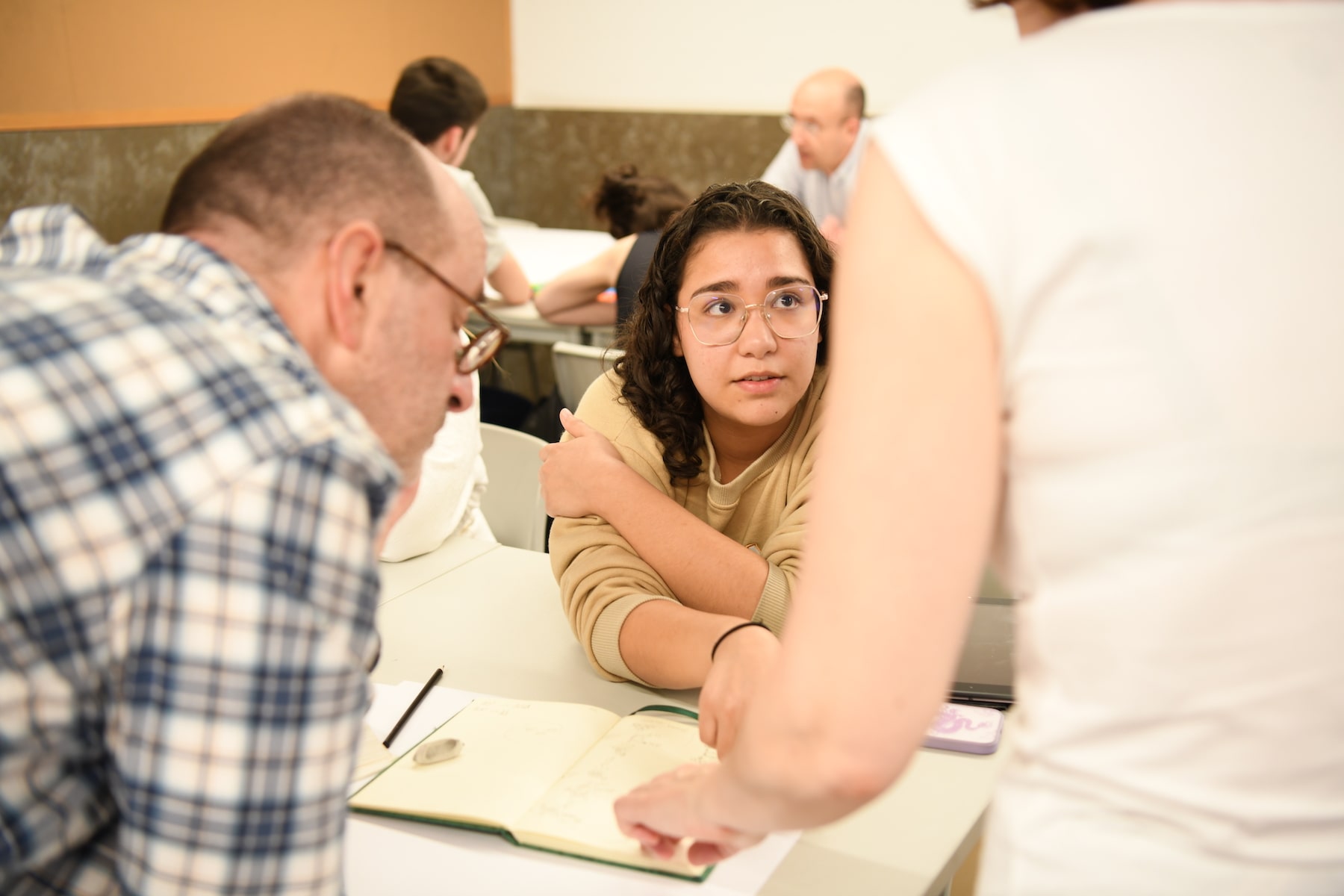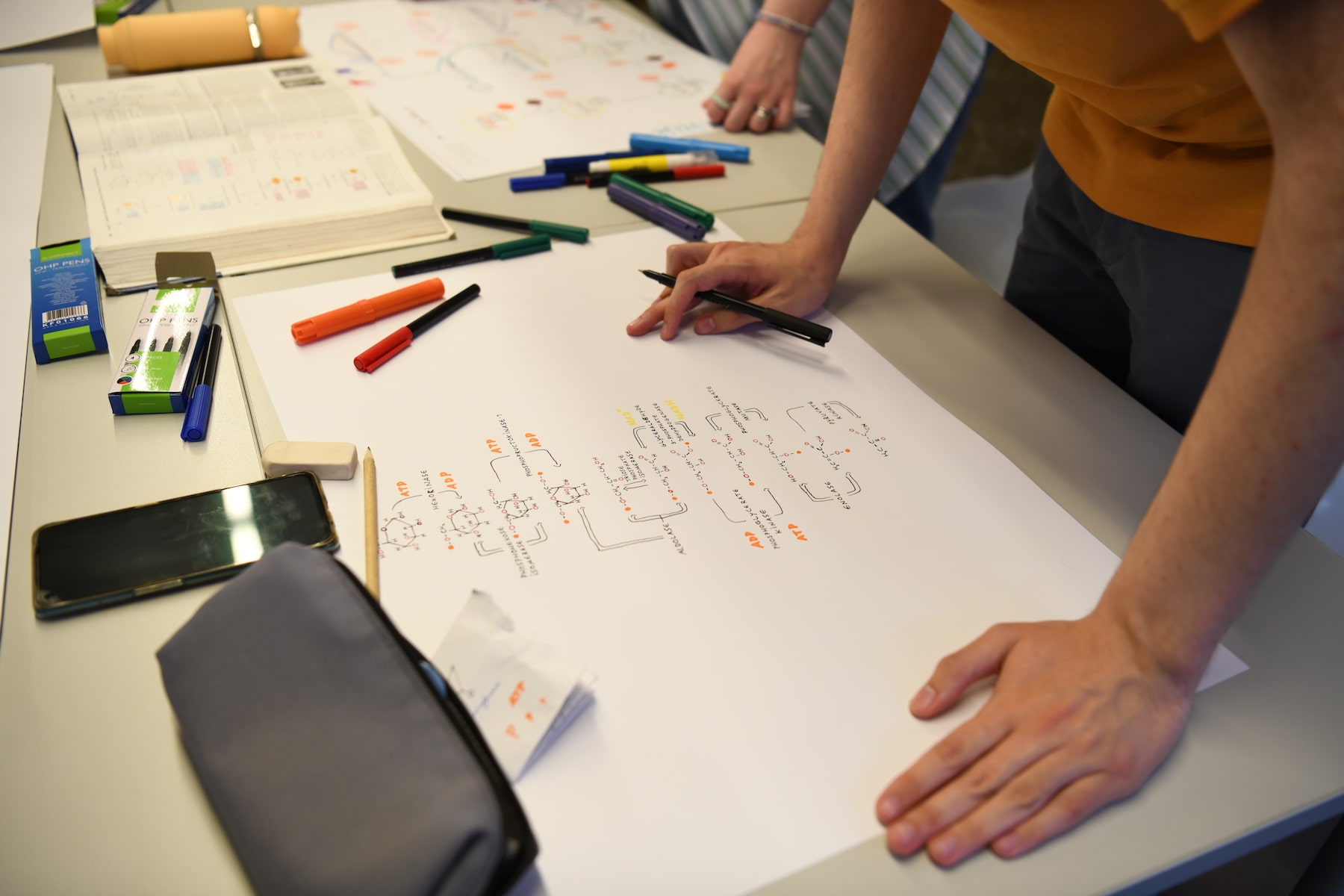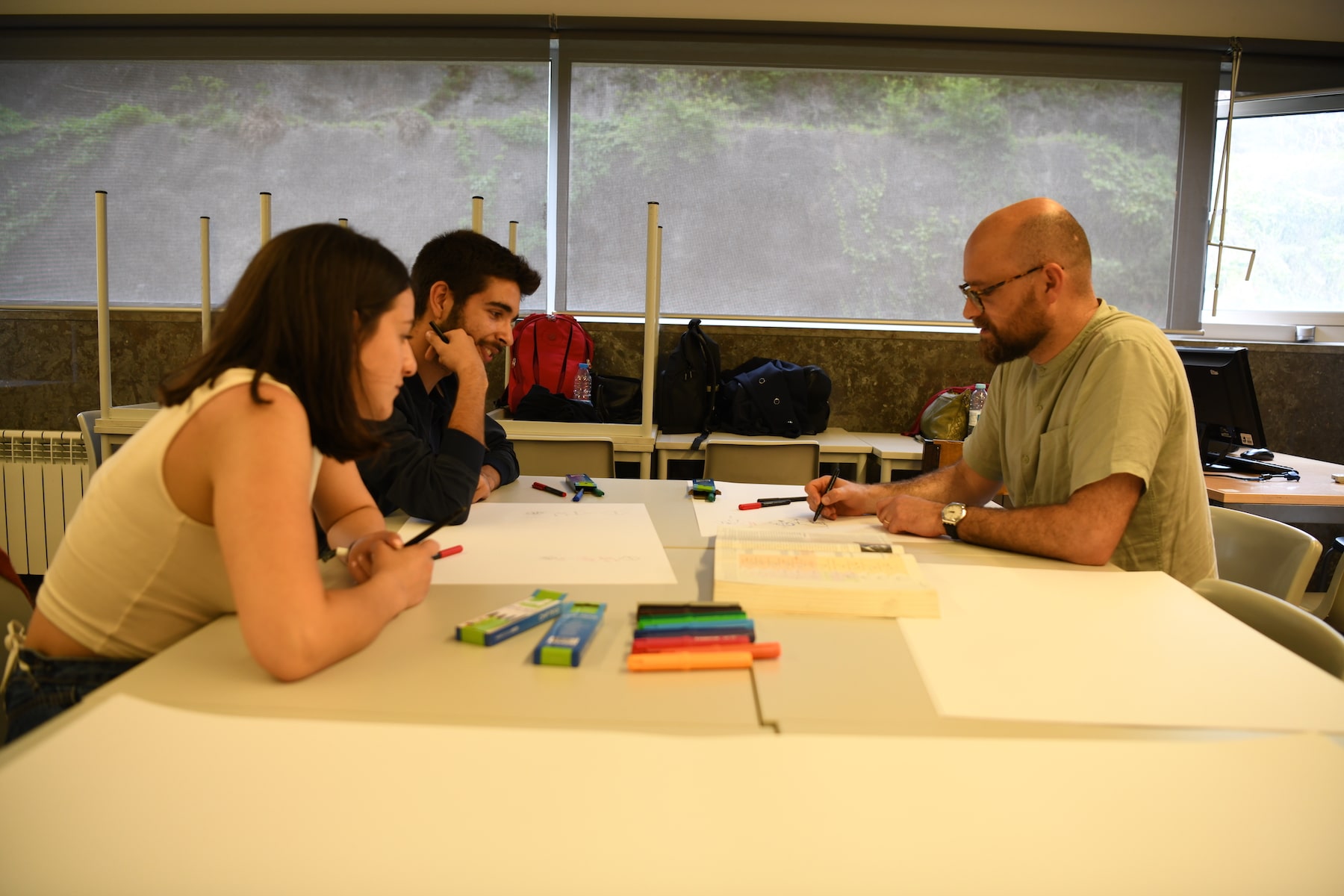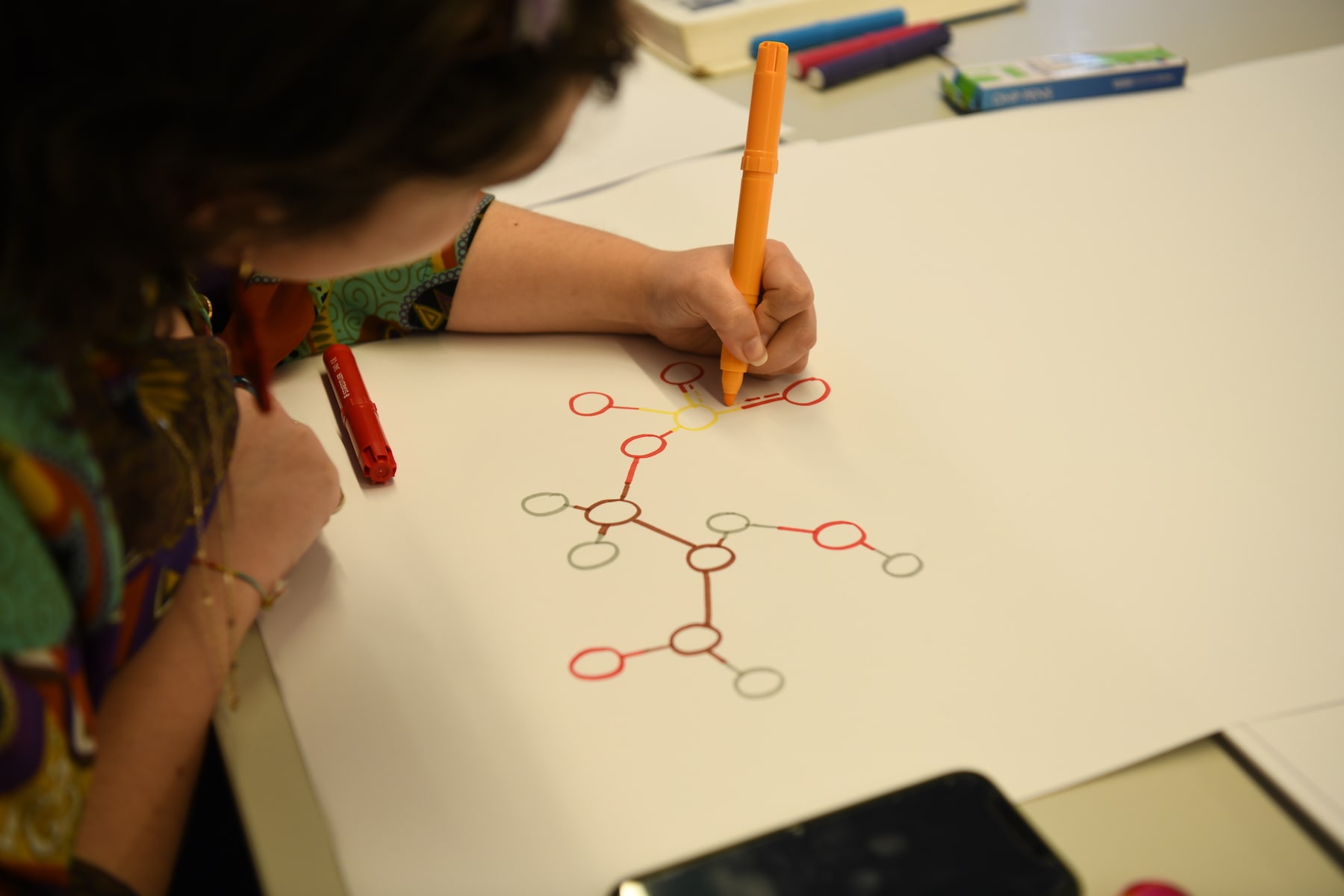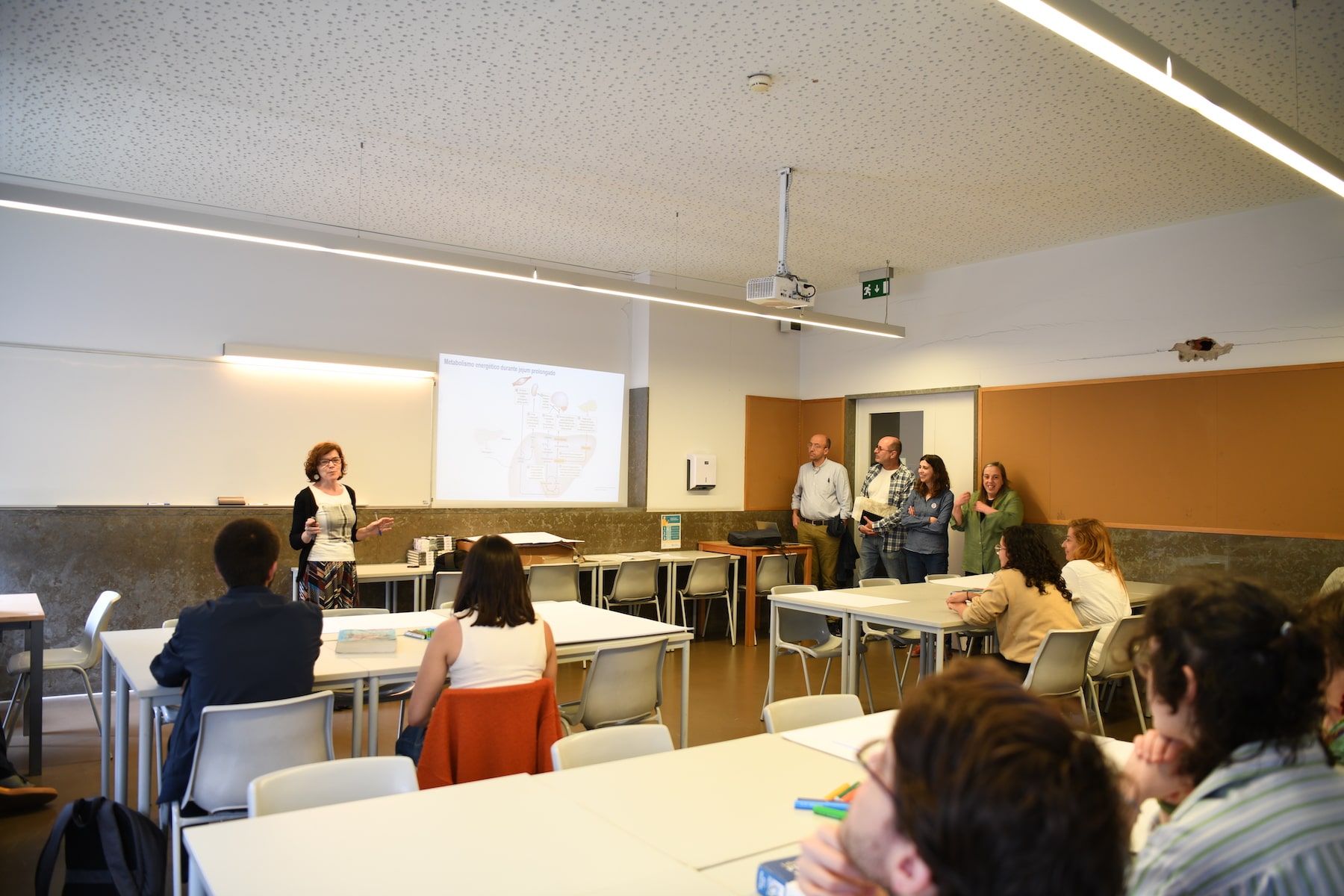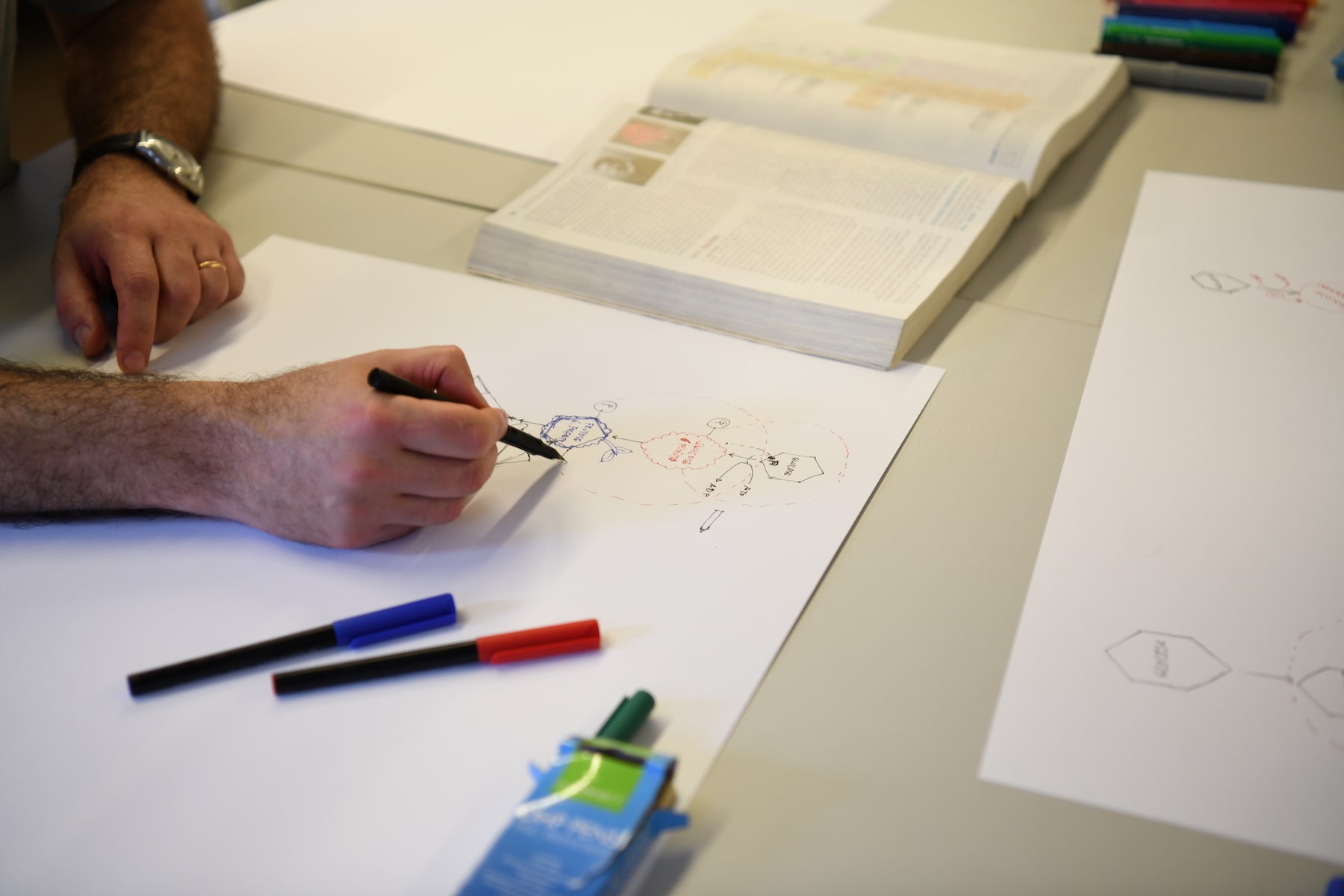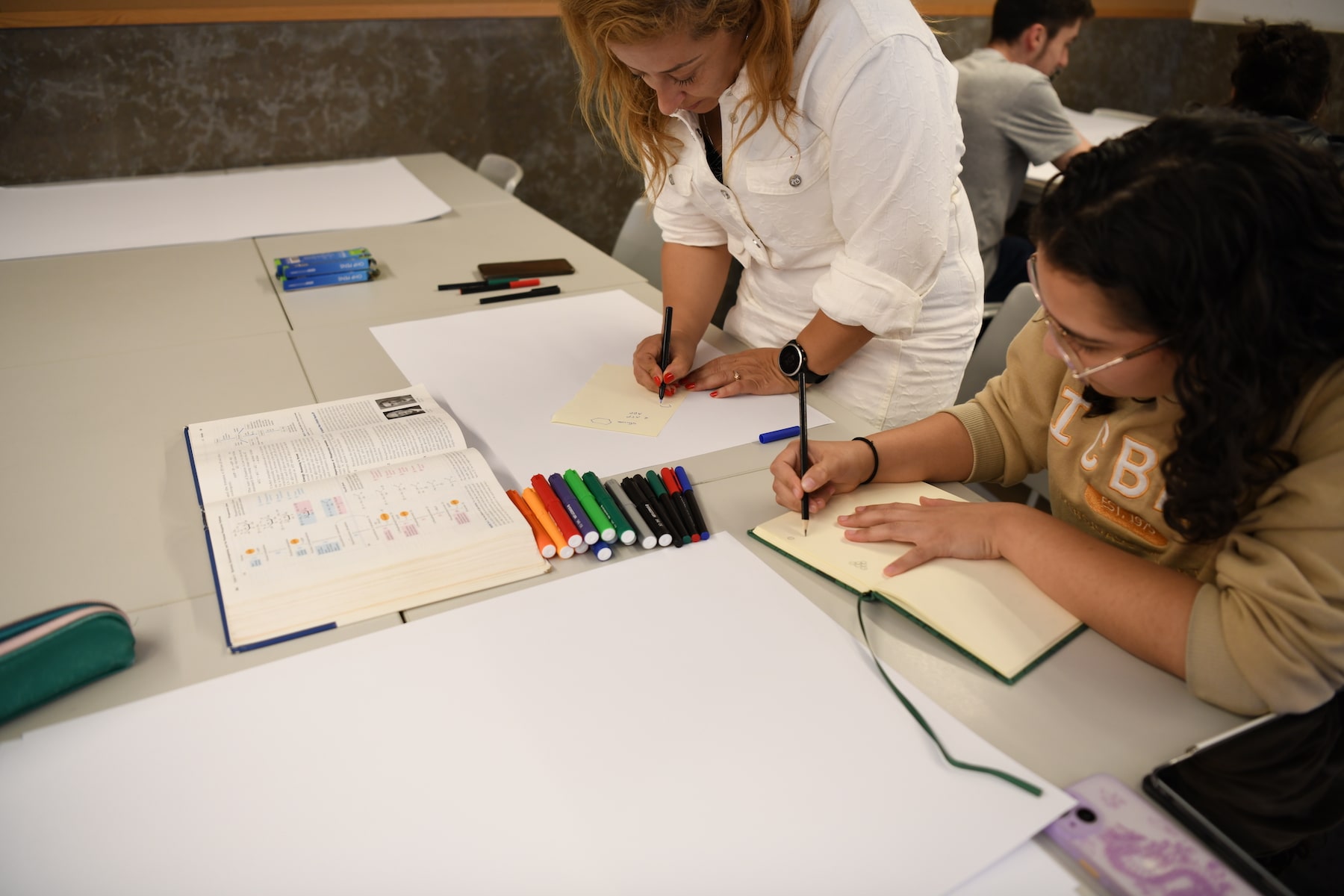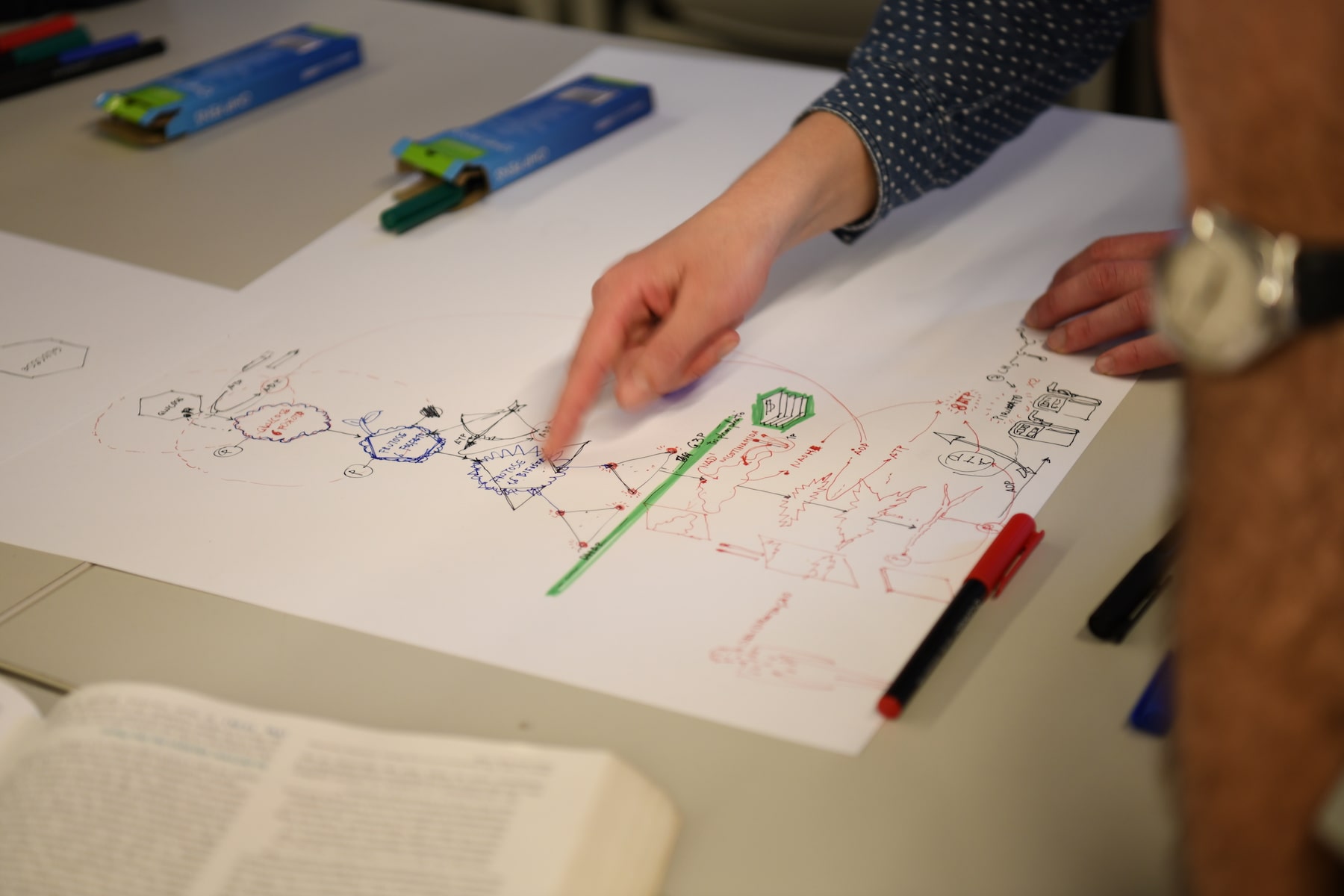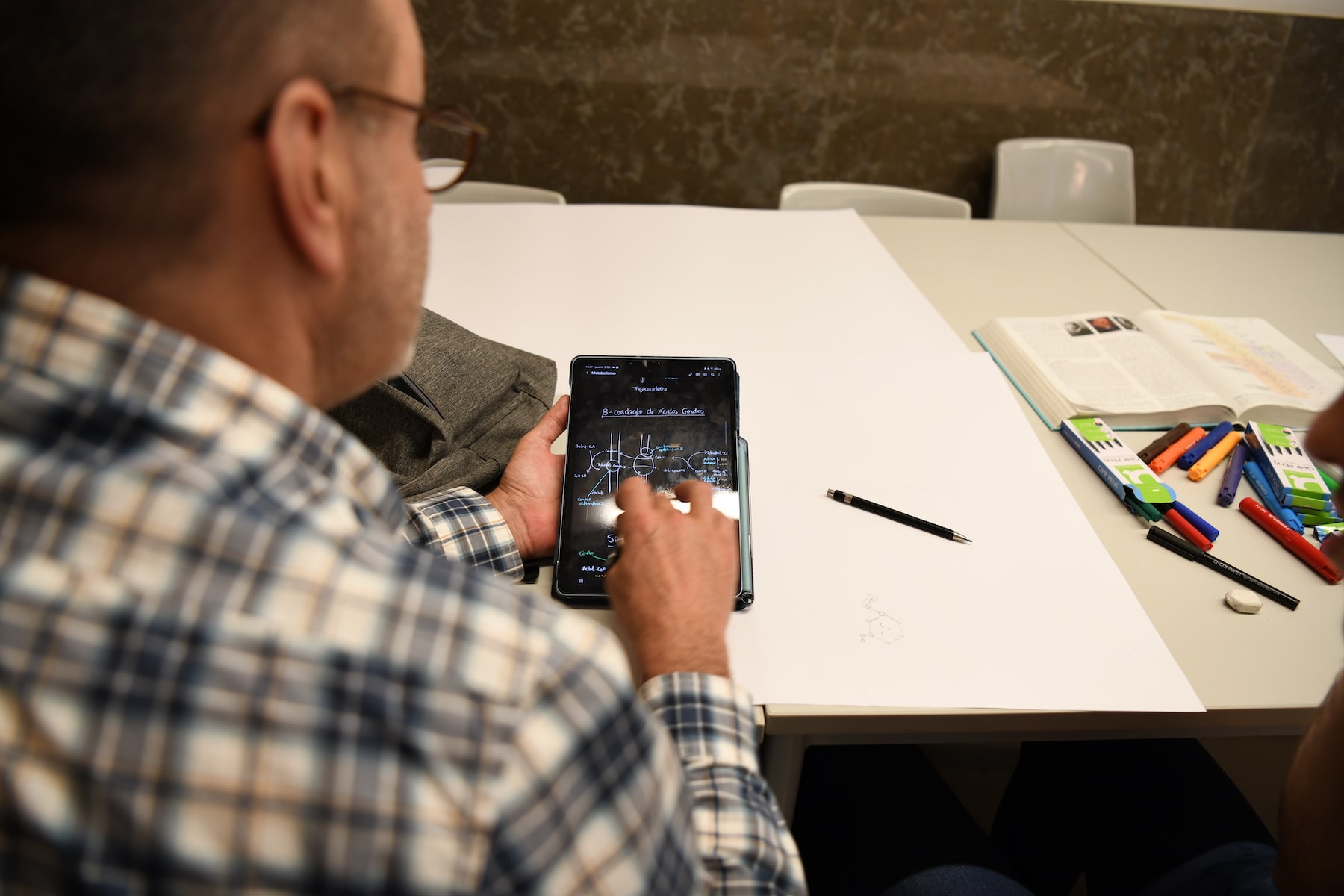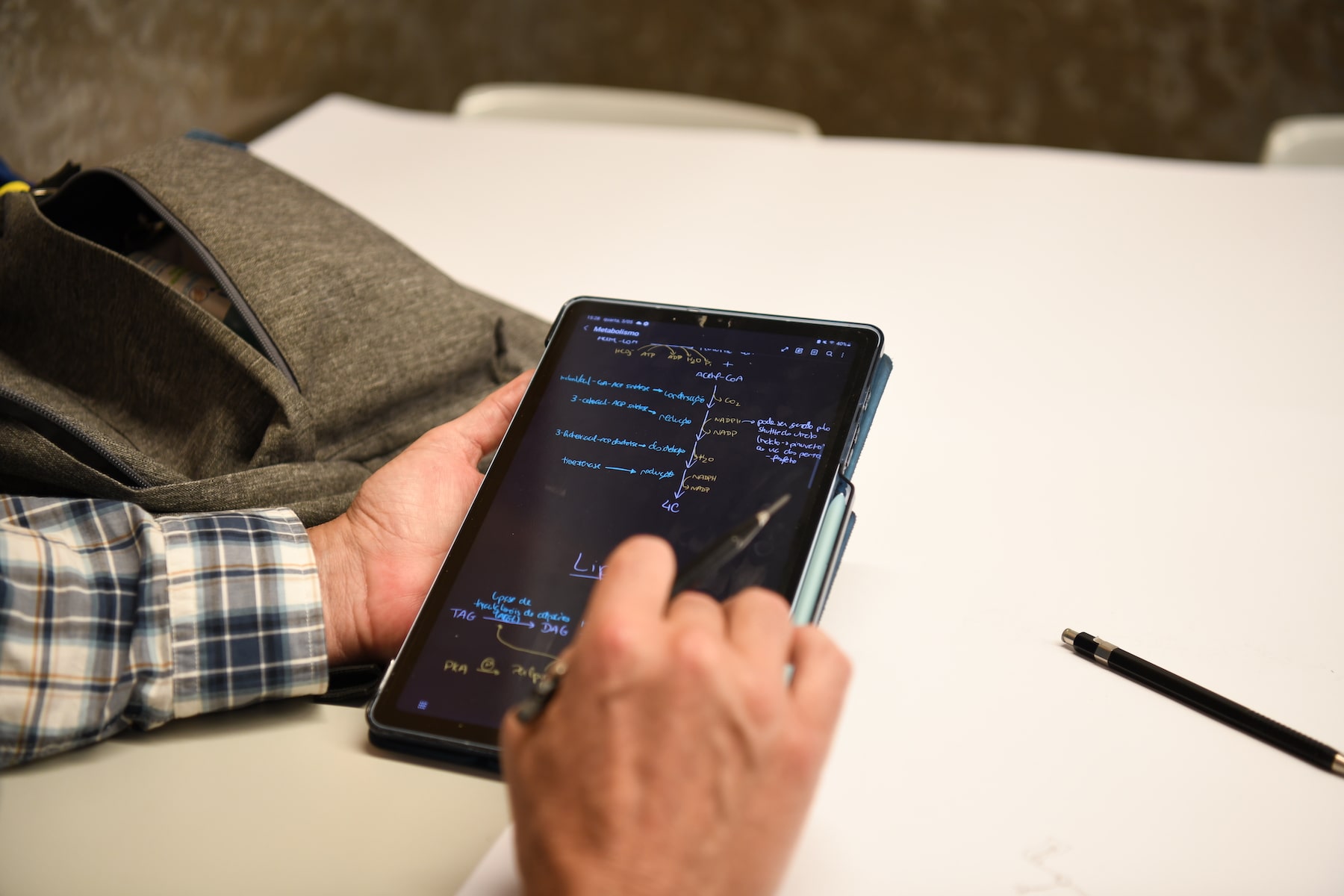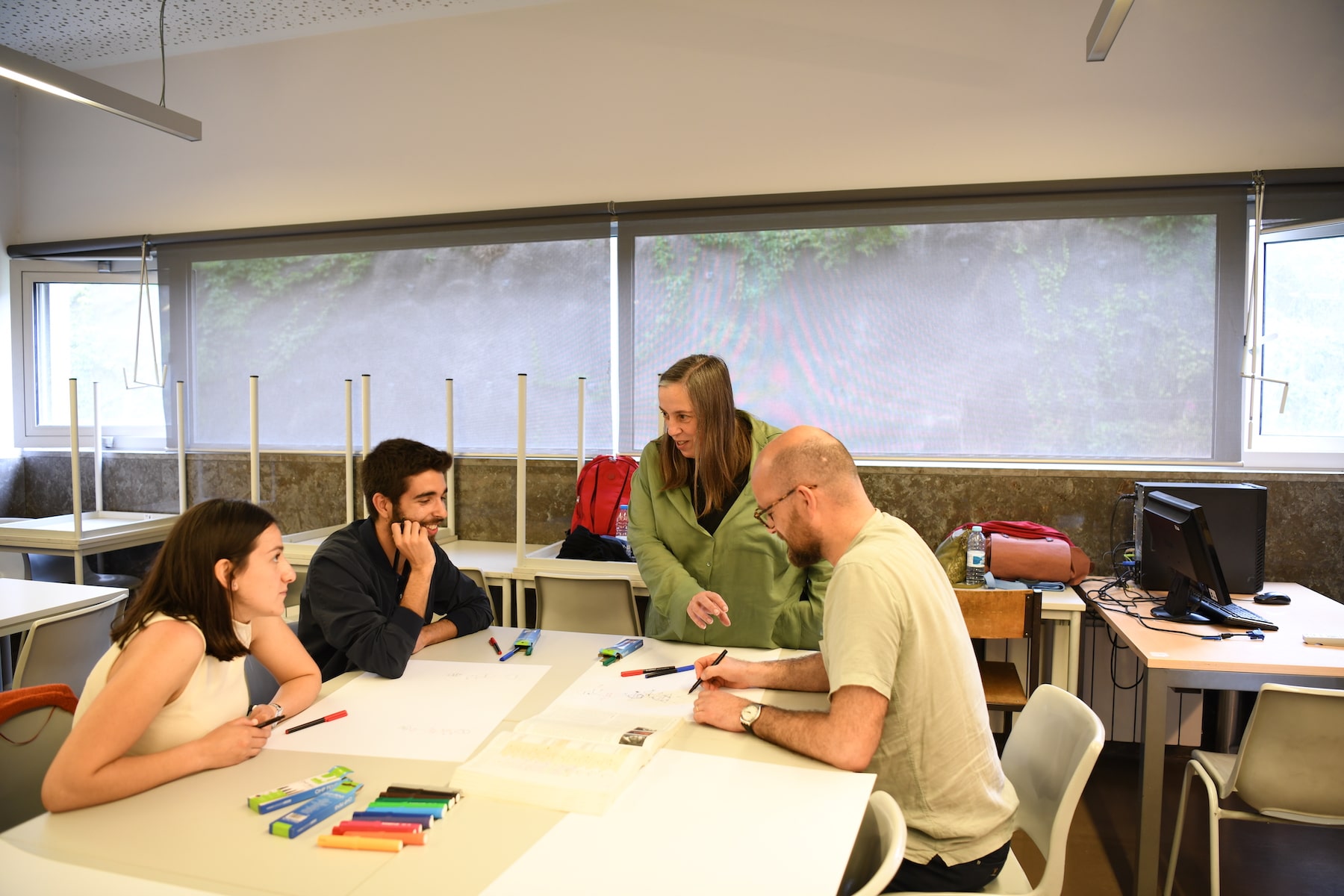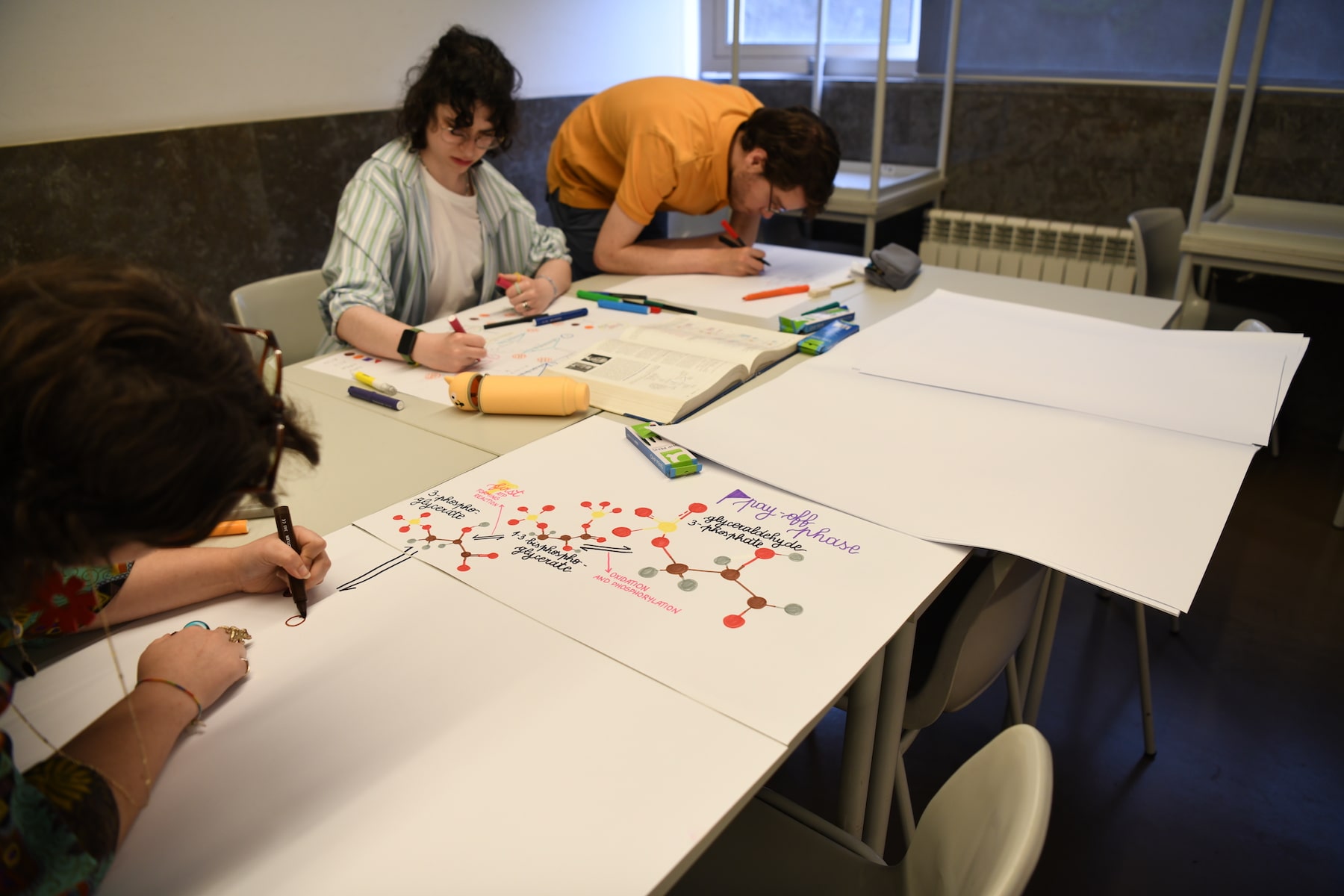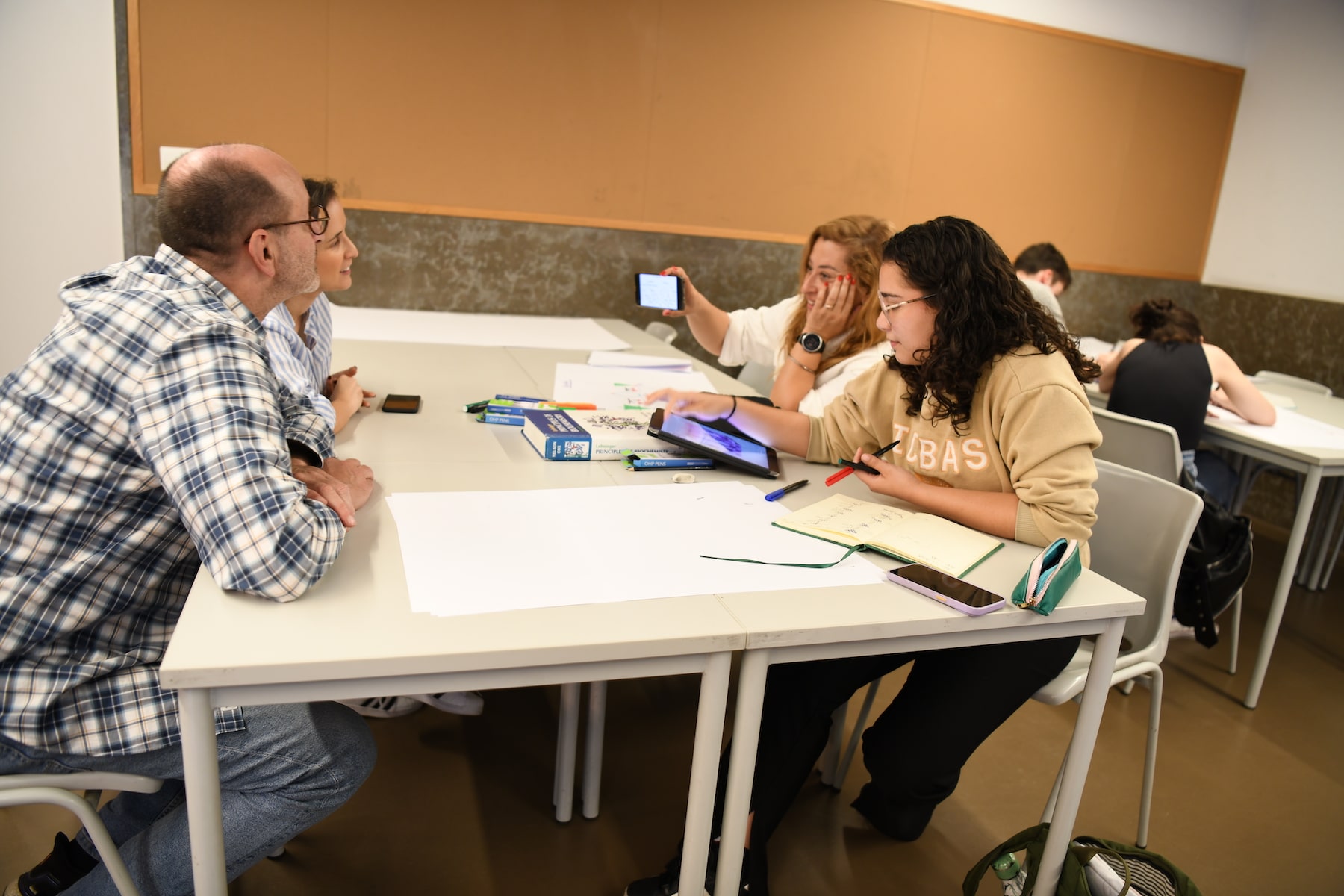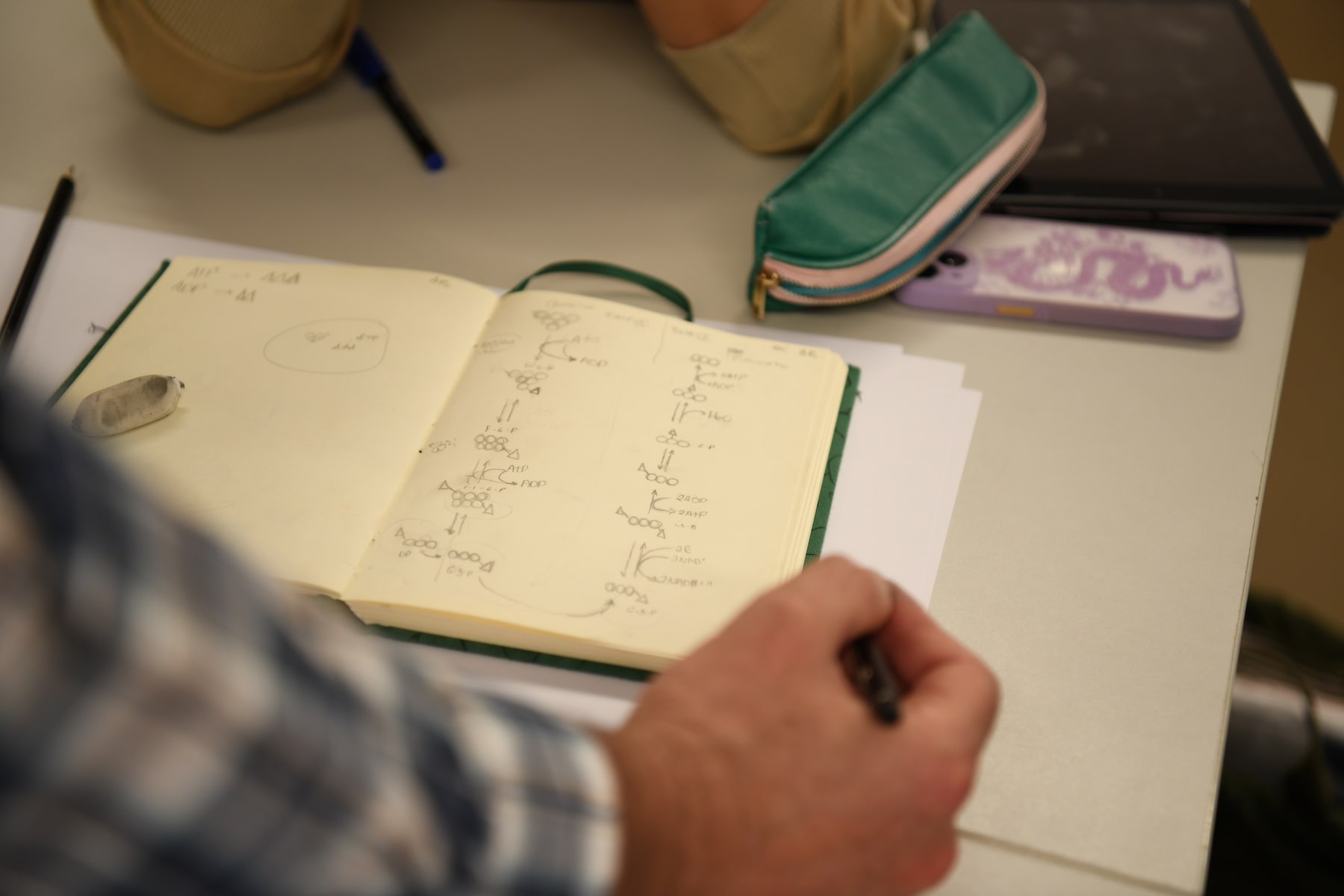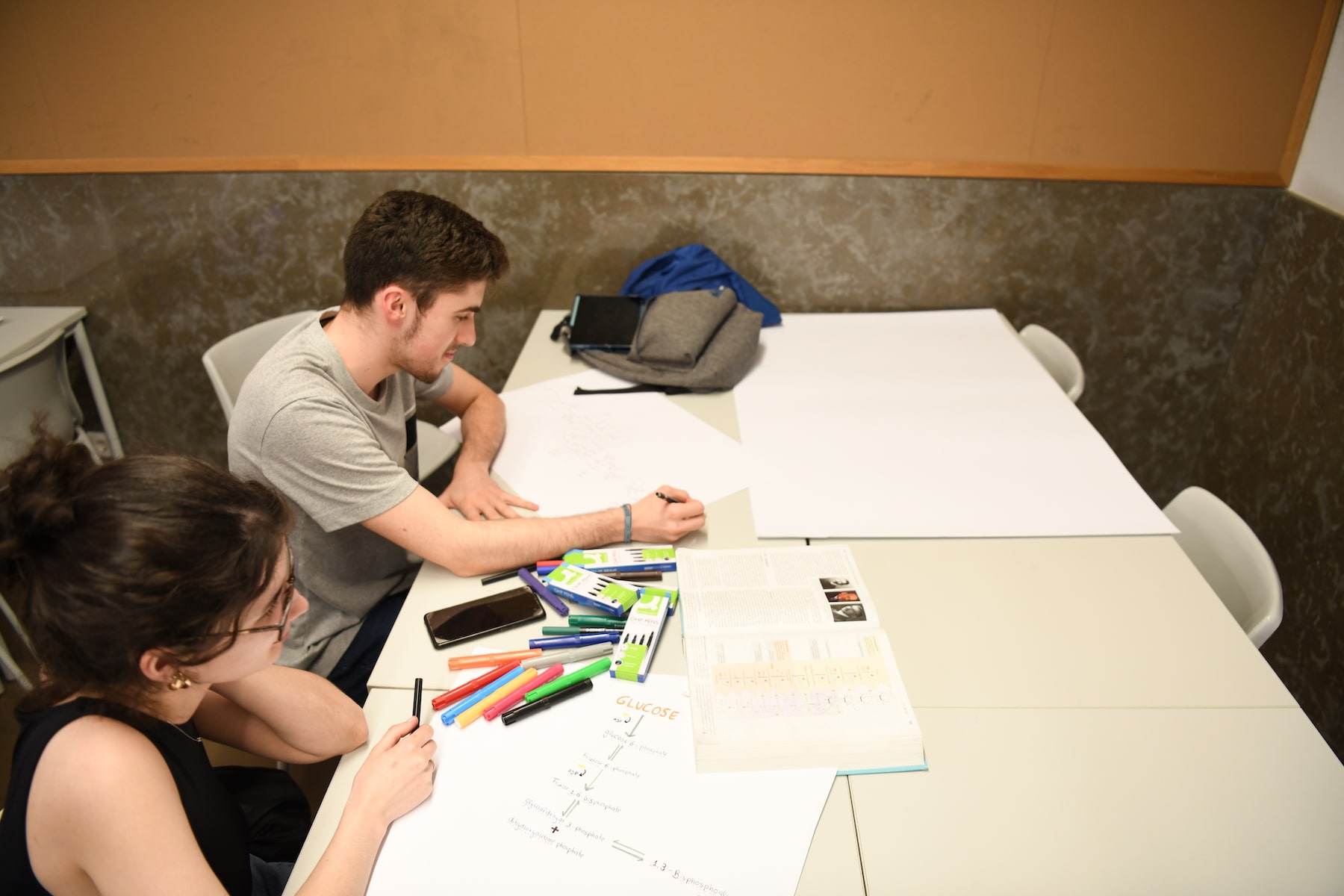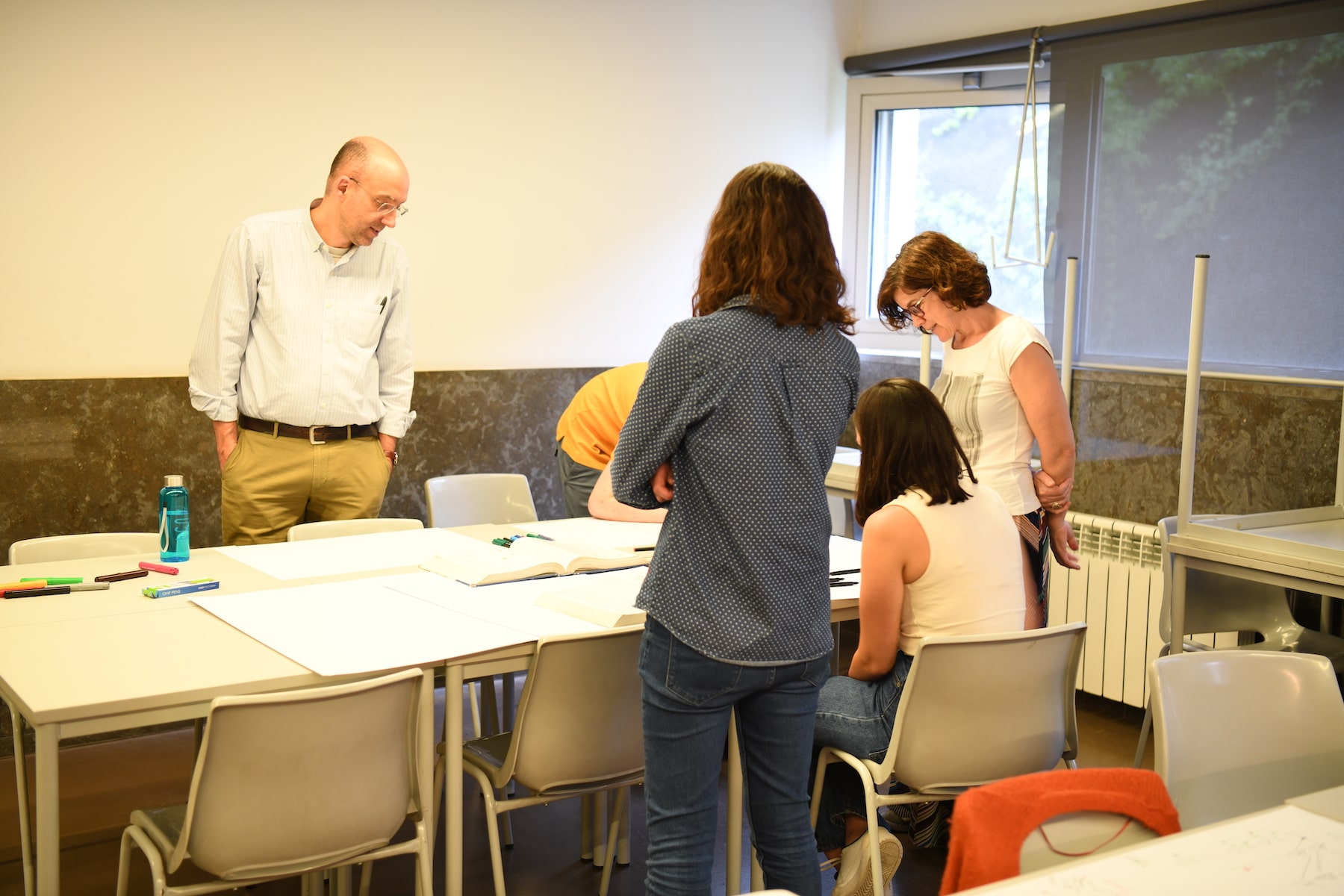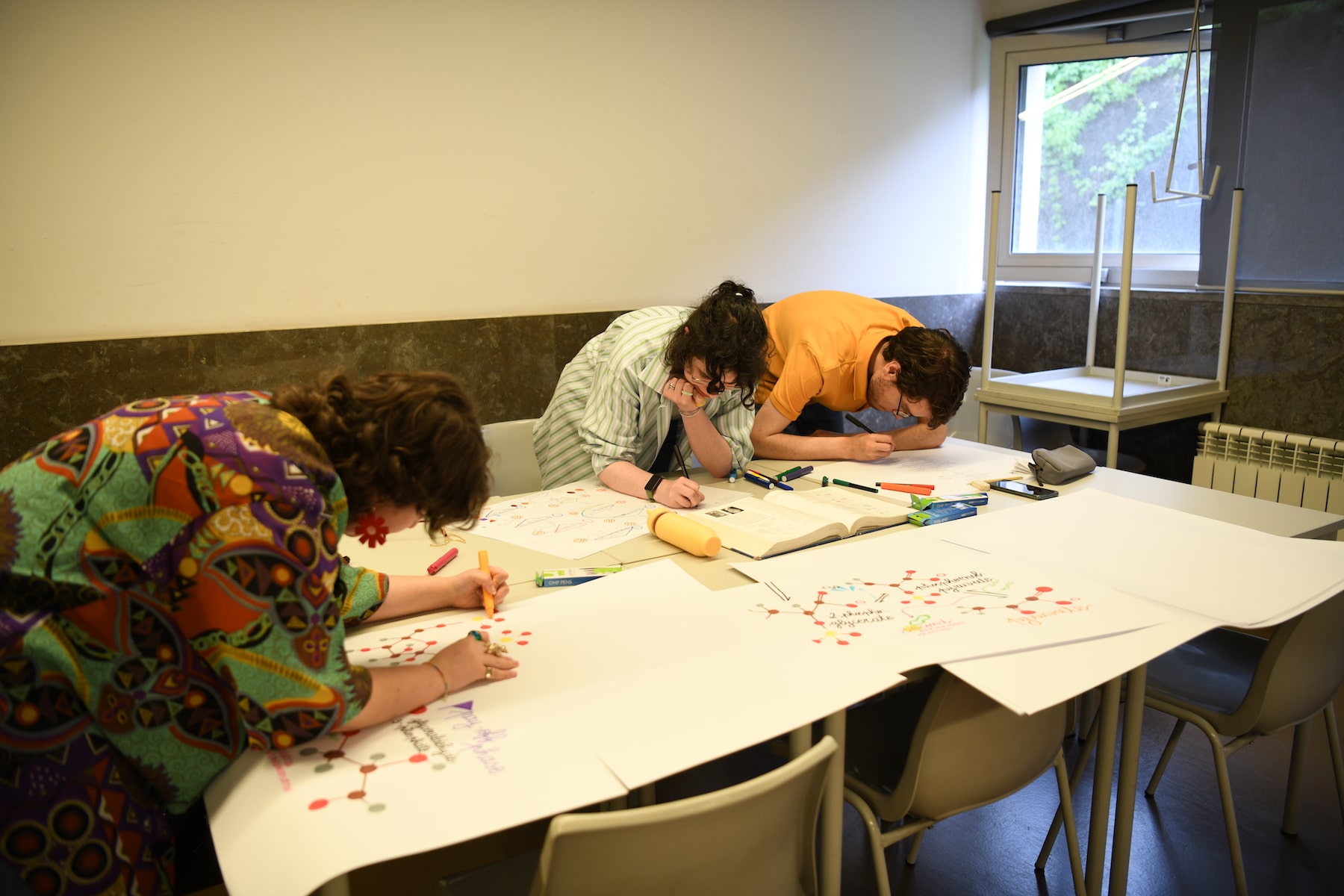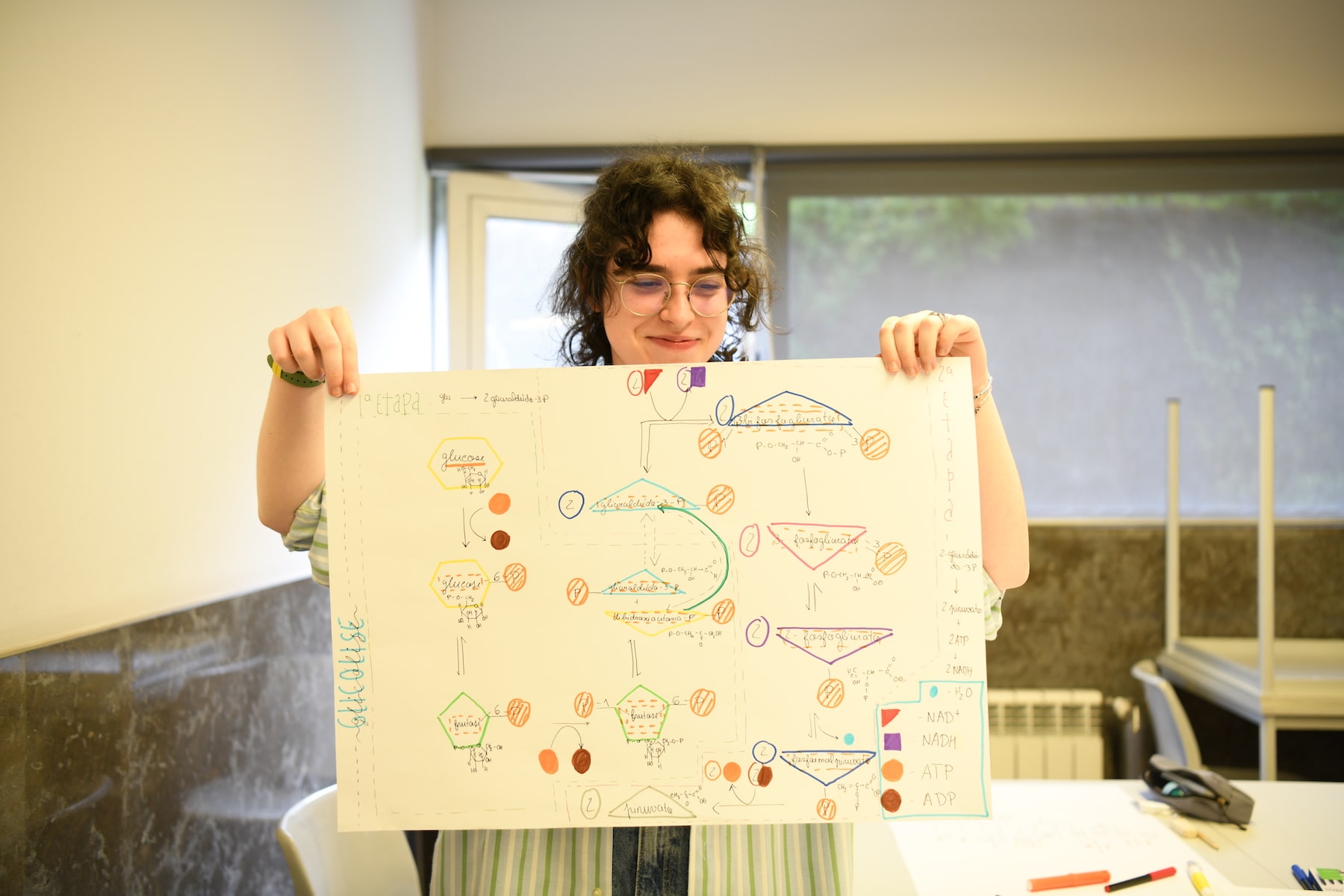The metabolism and its regulation are central aspects of training in Biochemistry. A metabolic map represents a set of enzymatic reactions and their interrelationships, describing cells’ physiological and pathological processes. Creating these representations constitutes a challenge, and in this context, it is important to explore the drawing of metabolic maps as an integral tool of the learning process. The collaborative workshop on biochemistry and drawing, voluntary participation, was proposed as an extracurricular activity. This activity, of visual-spatial content, sought to develop a new reflective approach to the subject matter in partnership with the Faculty of Fine Arts of the University of Porto / i2ADS – Institute of Research in Art, Design, and Society, within the scope of the research project DRAWinU – Drawing Across University Borders (PTDC/ART-OUT/3560/2021).
The workshop was aimed at students from the study cycles of ICBAS, and it also counted on the collaboration of two teachers who participated in it. It included students from the Doctoral Program in Biomedical Sciences, Master PNI, MIMV, Master’s in Cellular and Molecular Biology, Master’s in Biochemistry, and Bachelor’s in Biochemistry. The objective was to explore visualisation modes of the glycolysis cycle as a concrete problem of representing metabolic maps. Since most students are familiar with the biochemical process of glycolysis molecule transformation, some of the most common representation models were addressed, and collaborative strategies were explored to describe the various phases of the process. Representing biology as a process is a fundamental aspect of the new questions raised by science studies. Divergent thinking strategies were used to facilitate memorisation, particularly analogies between images and phases of the biochemical process. As a result, a new problem was noted: the difficulty reconciling the diagrammatic representation of the metabolic process with its location within the cell. This issue will continue in a new workshop to explore the representation of these two angles.


